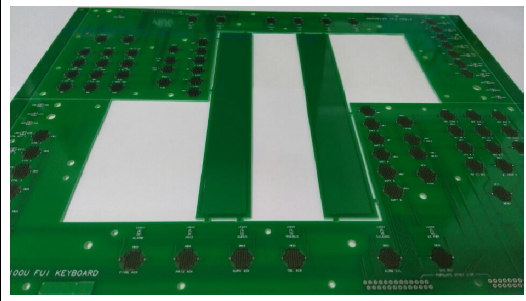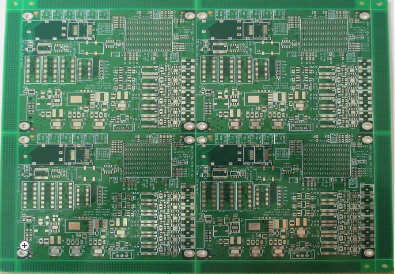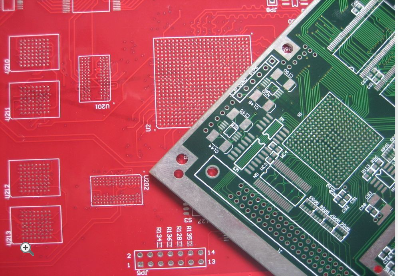-
 Agriculture
Agriculture
-
 Health-Care
Health-Care
-
 Environment
Environment
-
 Construction-Real-Estate
Construction-Real-Estate
-
 Tools-Hardware
Tools-Hardware
-
 Home-Garden
Home-Garden
-
 Furniture
Furniture
-
 Luggage-Bags-Cases
Luggage-Bags-Cases
-
 Medical-devices-Supplies
Medical-devices-Supplies
-
 Gifts-Crafts
Gifts-Crafts
-
 Sports-Entertainment
Sports-Entertainment
-
 Food-Beverage
Food-Beverage
-
 Vehicles-Transportation
Vehicles-Transportation
-
 Power-Transmission
Power-Transmission
-
 Material-Handling
Material-Handling
-
 Renewable-Energy
Renewable-Energy
-
 Safety
Safety
-
 Testing-Instrument-Equipment
Testing-Instrument-Equipment
-
 Construction-Building-Machinery
Construction-Building-Machinery
-
 Pet-Supplies
Pet-Supplies
-
 Personal-Care-Household-Cleaning
Personal-Care-Household-Cleaning
-
 Vehicle-Accessories-Electronics-Tools
Vehicle-Accessories-Electronics-Tools
-
 School-Office-Supplies
School-Office-Supplies
-
 Packaging-Printing
Packaging-Printing
-
 Mother-Kids-Toys
Mother-Kids-Toys
-
 Business-Services
Business-Services
-
 Commercial-Equipment-Machinery
Commercial-Equipment-Machinery
-
 Apparel-Accessories
Apparel-Accessories
-
 Security
Security
-
 Shoes-Accessories
Shoes-Accessories
-
 Vehicle-Parts-Accessories
Vehicle-Parts-Accessories
-
 Jewelry-Eyewear-Watches-Accessories
Jewelry-Eyewear-Watches-Accessories
-
 Lights-Lighting
Lights-Lighting
-
 Fabric-Textile-Raw-Material
Fabric-Textile-Raw-Material
-
 Fabrication-Services
Fabrication-Services
-
 Industrial-Machinery
Industrial-Machinery
-
 Consumer-Electronics
Consumer-Electronics
-
 Electrical-Equipment-Supplies
Electrical-Equipment-Supplies
-
 Electronic-Components-Accessories-Telecommunications
Electronic-Components-Accessories-Telecommunications
-
 Home-Appliances
Home-Appliances
-
 Beauty
Beauty
-
 Chemicals
Chemicals
-
 Rubber-Plastics
Rubber-Plastics
-
 Metals-Alloys
Metals-Alloys
- Masonry Materials
- Curtain Walls & Accessories
- Earthwork Products
- Fireproofing Materials
- Heat Insulation Materials
- Plastic Building Materials
- Building Boards
- Soundproofing Materials
- Timber
- Waterproofing Materials
- Balustrades & Handrails
- Bathroom & Kitchen
- Flooring & Accessories
- Tiles & Accessories
- Door, Window & Accessories
- Fireplaces & Stoves
- Floor Heating Systems & Parts
- Stairs & Stair Parts
- Ceilings
- Elevators & Escalators
- Stone
- Countertops, Vanity Tops & Table Tops
- Mosaics
- Metal Building Materials
- Multifunctional Materials
- Ladders & Scaffoldings
- Mouldings
- Corner Guards
- Decorative Films
- Formwork
- Building & Industrial Glass
- Other Construction & Real Estate
- Wallpapers/Wall panels
- HVAC System & Parts
- Outdoor Facilities
- Prefabricated Buildings
- Festive & Party Supplies
- Bathroom Products
- Household Sundries
- Rain Gear
- Garden Supplies
- Household Cleaning Tools & Accessories
- Lighters & Smoking Accessories
- Home Storage & Organization
- Household Scales
- Smart Home Improvement
- Home Textiles
- Kitchenware
- Drinkware & Accessories
- Dinnerware, Coffee & Wine
- Home Decor
- Golf
- Fitness & Body Building
- Amusement Park Facilities
- Billiards, Board Game,Coin Operated Games
- Musical Instruments
- Outdoor Affordable Luxury Sports
- Camping & Hiking
- Fishing
- Sports Safety&Rehabilitation
- Ball Sports Equipments
- Water Sports
- Winter Sports
- Luxury Travel Equipments
- Sports Shoes, Bags & Accessories
- Cycling
- Other Sports & Entertainment Products
- Artificial Grass&Sports Flooring&Sports Court Equipment
- Scooters
- Food Ingredients
- Honey & Honey Products
- Snacks
- Nuts & Kernels
- Seafood
- Plant & Animal Oil
- Beverages
- Fruit & Vegetable Products
- Frog & Escargot
- Bean Products
- Egg Products
- Dairy Products
- Seasonings & Condiments
- Canned Food
- Instant Food
- Baked Goods
- Other Food & Beverage
- Meat & Poultry
- Confectionery
- Grain Products
- Feminie Care
- Hair Care & Styling
- Body Care
- Hands & Feet Care
- Hygiene Products
- Men's Grooming
- Laundry Cleaning Supplies
- Travel Size & Gift Sets
- Room Deodorizers
- Other Personal Care Products
- Pest Control Products
- Special Household Cleaning
- Floor Cleaning
- Kitchen & Bathroom Cleaning
- Oral Care
- Bath Supplies
- Yellow Pages
- Correction Supplies
- Office Binding Supplies
- Office Cutting Supplies
- Board Erasers
- Office Adhesives & Tapes
- Education Supplies
- Pencil Cases & Bags
- Notebooks & Writing Pads
- File Folder Accessories
- Calendars
- Writing Accessories
- Commercial Office Supplies
- Pencil Sharpeners
- Pens
- Letter Pad/Paper
- Paper Envelopes
- Desk Organizers
- Pencils
- Markers & Highlighters
- Filing Products
- Art Supplies
- Easels
- Badge Holder & Accessories
- Office Paper
- Printer Supplies
- Book Covers
- Other Office & School Supplies
- Stationery Set
- Boards
- Clipboards
- Stamps
- Drafting Supplies
- Stencils
- Electronic Dictionary
- Books
- Map
- Magazines
- Calculators
- Baby & Toddler Toys
- Educational Toys
- Classic Toys
- Dress Up & Pretend Play
- Toy Vehicle
- Stuffed Animals & Plush Toys
- Outdoor Toys & Structures
- Balloons & Accessories
- Baby Food
- Children's Clothing
- Baby Supplies & Products
- Maternity Clothes
- Kids Shoes
- Baby Care
- Novelty & Gag Toys
- Dolls & Accessories
- Puzzle & Games
- Blocks & Model Building Toys
- Toddler Clothing
- Baby Clothing
- Kids' Luggage & Bags
- Arts, Crafts & DIY Toys
- Action & Toy Figures
- Baby Appliances
- Hobbies & Models
- Remote Control Toys
- Promotional Toys
- Pregnancy & Maternity
- Hygiene Products
- Kid's Textile&Bedding
- Novelty & Special Use
- Toy Weapons
- Baby Gifts
- Baby Storage & Organization
- Auto Drive Systems
- ATV/UTV Parts & Accessories
- Marine Parts & Accessories
- Other Auto Parts
- Trailer Parts & Accessories
- Auto Transmission Systems
- Train Parts & Accessories
- Universal Parts
- Railway Parts & Accessories
- Auto Brake Systems
- Aviation Parts & Accessories
- Truck Parts & Accessories
- Auto Suspension Systems
- Auto Lighting Systems
- New Energy Vehicle Parts & Accessories
- Auto Steering Systems
- Wheels, Tires & Accessories
- Bus Parts & Accessories
- Auto Performance Parts
- Cooling System
- Go-Kart & Kart Racer Parts & Accessories
- Air Conditioning Systems
- Heavy Duty Vehicle Parts & Accessories
- Auto Electrical Systems
- Auto Body Systems
- Auto Engine Systems
- Container Parts & Accessories
- Motorcycle Parts & Accessories
- Refrigeration & Heat Exchange Equipment
- Machine Tool Equipment
- Food & Beverage Machinery
- Agricultural Machinery & Equipment
- Apparel & Textile Machinery
- Chemical Machinery
- Packaging Machines
- Paper Production Machinery
- Plastic & Rubber Processing Machinery
- Industrial Robots
- Electronic Products Machinery
- Metal & Metallurgy Machinery
- Woodworking Machinery
- Home Product Manufacturing Machinery
- Machinery Accessories
- Environmental Machinery
- Machinery Service
- Electrical Equipment Manufacturing Machinery
- Industrial Compressors & Parts
- Tobacco & Cigarette Machinery
- Production Line
- Used Industrial Machinery
- Electronics Production Machinery
- Other Machinery & Industrial Equipment
- Camera, Photo & Accessories
- Portable Audio, Video & Accessories
- Television, Home Audio, Video & Accessories
- Video Games & Accessories
- Mobile Phone & Accessories
- Electronic Publications
- Earphone & Headphone & Accessories
- Speakers & Accessories
- Smart Electronics
- TV Receivers & Accessories
- Mobile Phone & Computer Repair Parts
- Chargers, Batteries & Power Supplies
- Used Electronics
- VR, AR, MR Hardware & Software
- Projectors & Presentation Equipments
- Other Consumer Electronics
- Cables & Commonly Used Accessories
- Computer Hardware & Software
- Displays, Signage and Optoelectronics
- Discrete Semiconductors
- Wireless & IoT Module and Products
- Telecommunications
- Connectors, Terminals & Accessories
- Development Boards, Electronic Modules and Kits
- Circuit Protection
- Sensors
- Isolators
- Audio Components and Products
- Integrated Circuits
- Power Supplies
- Relays
- RF, Microwave and RFID
- Electronic Accessories & Supplies
- Passive Components
- PCB & PCBA
- Air Quality Appliances
- Home Appliance Parts
- Heating & Cooling Appliances
- Small Kitchen Appliances
- Laundry Appliances
- Water Heaters
- Water Treatment Appliances
- Refrigerators & Freezers
- Personal Care & Beauty Appliances
- Major Kitchen Appliances
- Cleaning Appliances
- Second-hand Appliances
- Smart Home Appliances
- Other Home Appliances
- Energy Chemicals
- Inorganic Chemicals
- Basic Organic Chemicals
- Agrochemicals
- Admixture & Additives
- Catalysts & Chemical Auxiliary Agents
- Pigments & Dyestuff
- Coating & Paint
- Daily Chemicals
- Polymer
- Organic Intermediate
- Adhesives & Sealants
- Chemical Waste
- Biological Chemical Products
- Surface Treatment Chemicals
- Painting & Coating
- Chemical Reagents
- Flavor & Fragrance
- Non-Explosive Demolition Agents
- Other Chemicals
- Custom Chemical Services
Efficient Wireless Communication Board With Advanced Antenna Design
In an era where seamless connectivity is no longer a luxury but a necessity, the development of an efficient wireless communication board with advanced antenna design represents a significant leap forward in technology. This innovation addresses the growing demand for faster, more reliable, and energy-efficient wireless systems across industries such as telecommunications, IoT, smart cities, and autonomous vehicles. Traditional communication boards often struggle with issues like signal interference, limited range, and high power consumption, which can hinder performance in data-intensive applications. The integration of cutting-edge antenna technology into these boards promises to overcome these challenges, offering enhanced data rates, improved signal integrity, and reduced energy usage. By leveraging advancements in materials science, electromagnetic theory, and miniaturization techniques, this board is poised to revolutionize how devices communicate wirelessly, making it a topic of great interest for engineers, researchers, and tech enthusiasts alike.
Advanced Antenna Design and Its Principles
The core of this efficient wireless communication board lies in its advanced antenna design, which incorporates multiple innovative elements to optimize performance. Unlike conventional antennas that may suffer from inefficiencies in radiation patterns or bandwidth limitations, this design utilizes techniques such as phased arrays, metamaterials, and MIMO (Multiple-Input Multiple-Output) configurations. These approaches allow for beamforming, where the antenna can dynamically direct signals toward intended receivers, thereby reducing interference and enhancing signal strength. Additionally, the use of metamaterials—engineered materials with properties not found in nature—enables miniaturization without sacrificing performance, making the board suitable for compact devices like smartphones and IoT sensors.
Furthermore, the antenna design emphasizes wideband capabilities, supporting multiple frequency bands from sub-6 GHz to millimeter-wave spectrums. This versatility ensures compatibility with various wireless standards, including 5G, Wi-Fi 6, and Bluetooth Low Energy, facilitating seamless integration into diverse ecosystems. Simulations and prototyping have demonstrated significant improvements in gain and efficiency, with some configurations achieving over 90% radiation efficiency compared to traditional designs that often fall below 70%. Such enhancements not only boost data throughput but also contribute to overall system reliability, making the board ideal for applications requiring high-speed, low-latency communication.
Energy Efficiency and Power Management
Energy efficiency is a critical aspect of this wireless communication board, driven by the advanced antenna design and integrated power management systems. By optimizing the antenna's radiation efficiency, the board reduces the power required for transmission and reception, leading to lower energy consumption. This is particularly important for battery-operated devices, such as IoT nodes or mobile gadgets, where extended operational life is a key requirement. The board incorporates smart power amplifiers and low-noise amplifiers that adjust their output based on signal conditions, minimizing wasted energy during operation.
In addition to hardware optimizations, the board employs adaptive algorithms that monitor network conditions and adjust parameters like transmission power and data rate in real-time. For instance, in environments with strong signal strength, the board can lower its power output without compromising performance, thereby conserving energy. Tests have shown that this approach can reduce power consumption by up to 40% compared to standard boards, while maintaining or even improving data transfer rates. This combination of hardware and software efficiencies not only supports sustainability goals but also reduces operational costs for large-scale deployments.
Integration and Applications Across Industries
The efficient wireless communication board is designed for easy integration into a wide range of products and systems, thanks to its modular architecture and standardized interfaces. It supports common protocols like UART, SPI, and I2C, allowing developers to seamlessly incorporate it into existing designs without extensive modifications. This flexibility makes it applicable across numerous industries, from consumer electronics to industrial automation. For example, in smart home devices, the board can enable faster and more reliable connectivity for voice assistants and security systems, while in healthcare, it can facilitate real-time data transmission for wearable monitors and telemedicine equipment.
In more demanding scenarios, such as autonomous vehicles or smart city infrastructure, the board's advanced antenna design ensures robust communication even in challenging environments with high mobility or obstructions. Its ability to handle massive MIMO configurations supports high-density networks, making it suitable for urban deployments where thousands of devices need to communicate simultaneously. Case studies in pilot projects have demonstrated improved latency and throughput, with data rates exceeding 1 Gbps in 5G applications. This versatility underscores the board's potential to drive innovation and efficiency across multiple sectors.
Future Developments and Challenges
Looking ahead, the evolution of this efficient wireless communication board will likely focus on further miniaturization, enhanced AI-driven optimization, and support for emerging technologies like 6G and quantum communication. Researchers are exploring the use of nanomaterials and 3D printing techniques to create even smaller antennas with superior performance, which could open up new applications in nanodevices or implantable medical technology. Additionally, integrating machine learning algorithms could enable predictive adjustments to antenna parameters, anticipating network changes and optimizing performance proactively.
However, challenges remain, such as managing heat dissipation in high-power scenarios and ensuring compatibility with global regulatory standards for electromagnetic emissions. Addressing these issues will require collaborative efforts between industry stakeholders and academic institutions. Despite these hurdles, the ongoing advancements in antenna technology and wireless systems suggest a bright future for this board, with potential impacts on global connectivity and digital transformation. As development continues, it will be essential to balance innovation with practicality, ensuring that the board remains accessible and effective for diverse use cases.
REPORT































































































































































































































































































































































































































































































































































































